| Home |
___ Nicaragua |
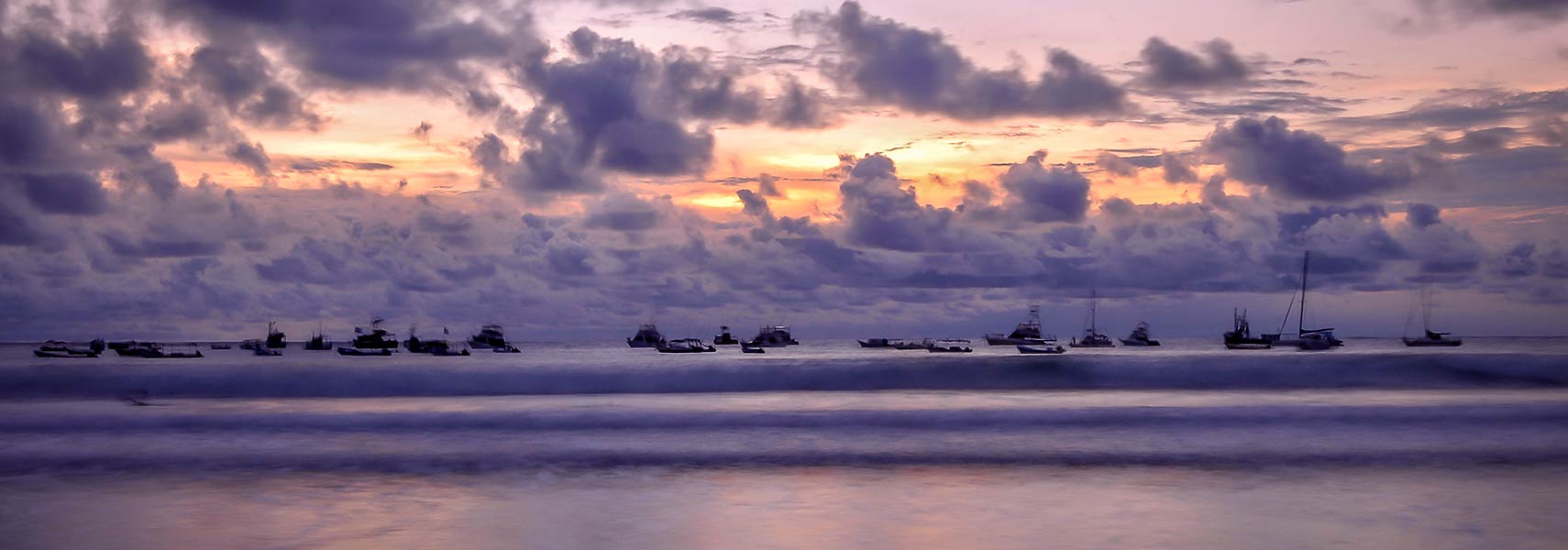 San Juan del Sur bay, Rivas department in southwest Nicaragua. Image: Céline Colin |
|
Destination Nicaragua, a virtual guide to this country in the center of the Central American isthmus, bordering both the Caribbean Sea (Atlantic Ocean) and the North Pacific Ocean. It is bordered by Costa Rica and Honduras, and it shares maritime borders with Colombia and El Salvador. Nicaragua is the largest country in Central America, it occupies an area of 130,370 km², compared it is somewhat larger than half the size of the United Kingdom or slightly smaller than the state of New York. The country has a variety of climates and terrains, its landscape offers extensive coastal plains at the Atlantic, lowlands at the Pacific and interior mountains in the central highlands. Highest point is the peak of Cerro Mogoton, the stated elevation might be incorrect – figures vary between 2,094 m, 2,107 m and 2,438 m above sea level, but anyway, Pico Mogoton the highest mountain in the country. Nicaragua is famous for a lot of lakes and volcanoes. The two largest fresh water lakes in Central America, Lake Managua and Lake Nicaragua, are located there. The country has a population of 6.2 million people (est. in 2017). Capital and largest city is Managua, almost one quarter of the country's population lives in the city. Spoken languages are Spanish (official), and several regional recognized languages like Miskito, Rama, Sumo, Miskito Coastal Creole, Garifuna, and Rama Cay Creole. |
Republic of Nicaragua | Republica de Nicaragua |
Country Profile |
Background: Nicaragua is the largest country in Central America. Settled as a colony of Spain in the 1520s, Nicaragua gained its independence in 1821. Violent opposition to governmental manipulation and corruption spread to all classes by 1978 and resulted in a short-lived civil war that brought the Marxist Sandinista guerrillas to power in 1979. Nicaraguan aid to leftist rebels in El Salvador caused the US to sponsor anti-Sandinista contra guerrillas through much of the 1980s. Free elections in 1990 and again in 1996 saw the Sandinistas defeated. The country has slowly rebuilt its economy during the 1990s, but was hard hit by Hurricane Mitch in 1998. related countries: Spain, United Kingdom other Central American countries: Belize, El Salvador, Guatemala, Panama |
Official Name: Republica de Nicaragua short form: Nicaragua int'l long form: Republic of Nicaragua ISO Country Code: ni, NIC Actual Time: Thu-Apr-25 12:44 Local Time = UTC -6h Country Calling Code: +505 Capital City: Managua (pop. 1 million) Other Cities: Granada, León, Jinotega, Matagalpa, Chinandega, Masaya. Government: Type: Republic. Independence: 1821 (from Spain). Constitution: The 1987 Sandinista-era Constitution was changed in 1995 to provide for a more even distribution of power among the four branches of government and again in 2000 to increase the Supreme Court and the Controller General's Office and to make changes to the electoral laws. Geography: Location: Central America Area: 130,370 km² (50,336 sq. mi.) Terrain: Extensive Atlantic coastal plains rising to central interior mountains; narrow Pacific coastal plain interrupted by volcanoes. Climate: Tropical in lowlands; cooler in highlands. People: Nationality: Nicaraguan(s) Population: 6.2 million (2017) Ethnic groups: Mestizo (mixed European and indigenous) 69%, white 17%, black (Jamaican origin) 9%, indigenous 5%. Religion: Predominantly Roman Catholic, with rapidly growing percentage of Evangelical Protestants. Languages: Spanish (official), English and indigenous languages on Caribbean coast. Literacy: 75% Natural resources: Arable land, livestock, fisheries, gold, timber. Agriculture products: Coffee, bananas, sugarcane, cotton, rice, corn, tobacco, sesame, soya, beans; beef, veal, pork, poultry, dairy products. Industries: Food processing, chemicals, machinery and metal products, textiles, clothing, petroleum refining and distribution, beverages, footwear, wood. Exports - commodities: coffee, beef, gold, sugar, peanuts, shrimp and lobster, tobacco, cigars, automobile wiring harnesses, textiles, apparel, cotton Exports - partners: USA 56.5%, Mexico 10.7%, Venezuela 5.4%, El Salvador 4.3% (2015) Imports - commodities: consumer goods, machinery and equipment, raw materials, petroleum products Imports - partners: USA 19.9%, Mexico 14.9%, China 10.6%, Venezuela 7%, Costa Rica 7%, El Salvador 5.7%, Guatemala 5.6%, Netherlands Antilles 5.5% (2015) Currency: Cordoba Oro (NIO) |
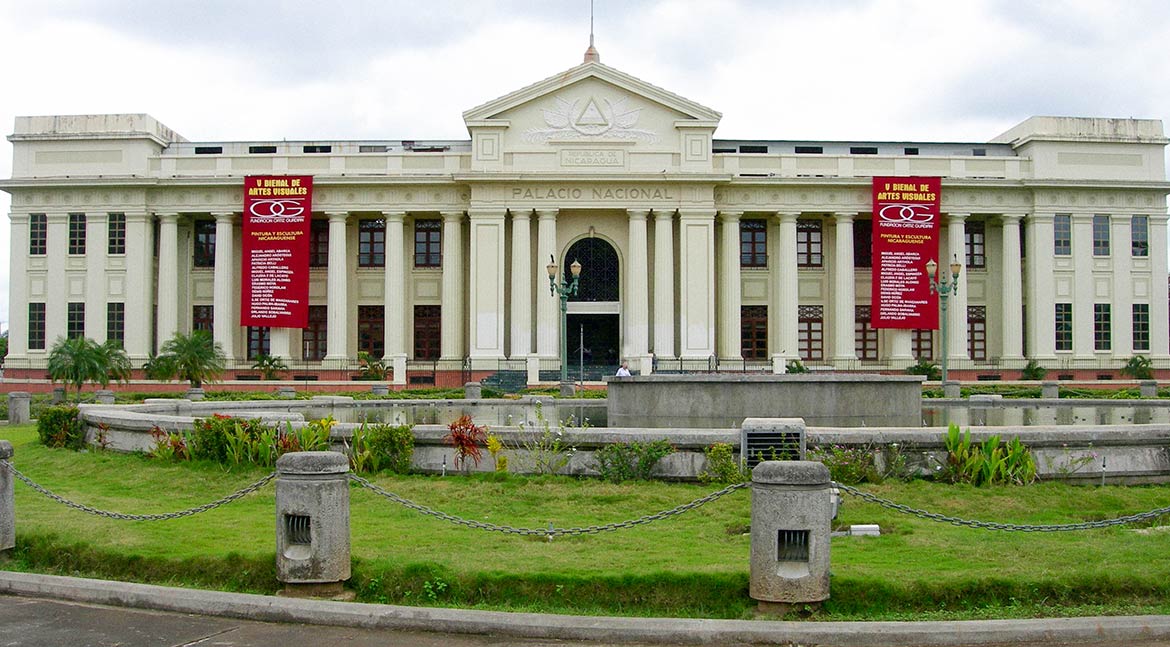 Palace of Culture, the former National Palace (Palacio Nacional) in Nicaragua's capital Managua was until 1979 home to the National Congress. Today it is used as a museum, an archive, and it houses the National Library. Political system Nicaragua is a presidential representative 'democratic' republic, or more precise, a family run business. President Daniel Ortega is head of state, head of government and commander-in-chief of the armed forces. His wife Rosario Murillo is now the Vice-president and 'communications chief'. Ortega, a Nicaraguan guerrilla leader and chairman of the Sandinista National Liberation Front (FSLN) became first Nicaragua's president in January 1985, then in January 2007 and he managed to find a legal way to stay in power after January 2012, when his second and last government period was expected to end. Legislative power is vested in both the government and Nicaragua's weak unicameral National Assembly, which is elected by proportional representation for five years. Official Sites of NicaraguaNote: External links will open in a new browser window.Presidencia de la Republica de Nicaragua The Presidency of Nicaragua (in Spanish). Asamblea Nacional de Nicaragua The National Assembly of Nicaragua. Ministerio de Relaciones Exteriores (offline) Ministry of External Relations (in Spanish). Permanent Mission of Nicaragua to the UN Consulate of Nicaragua Consulates from Nicaragua around the World. MapsPolitical Map of Nicaragua. Map of Nicaragua showing NIcaragua's administrative divisions. Searchable map and satellite view of Nicaragua. Searchable map and satellite view of Nicaragua's capital city. Reference Map of Central America and the Caribbean. |
NewsNicaragua's radio and TV are the main sources of news. Reporters Without Borders has noted that President Daniel Ortega’s re-election in November 2016 for a third consecutive term was accompanied by mistreatment of Nicaraguan journalists, especially those with independent or opposition media outlets. Journalism as a whole is stigmatized and journalists are often the targets of harassment campaigns, arbitrary arrests, and death threats.Bolsa de Noticias National news (in Spanish). El Nuevo Diario Managua 100% News Noticias Noticias de Nicaragua. La Prensa Regional and international news (in Spanish). Trinchera de la Noticia Regional news. |
Bookmark/share this page 
|
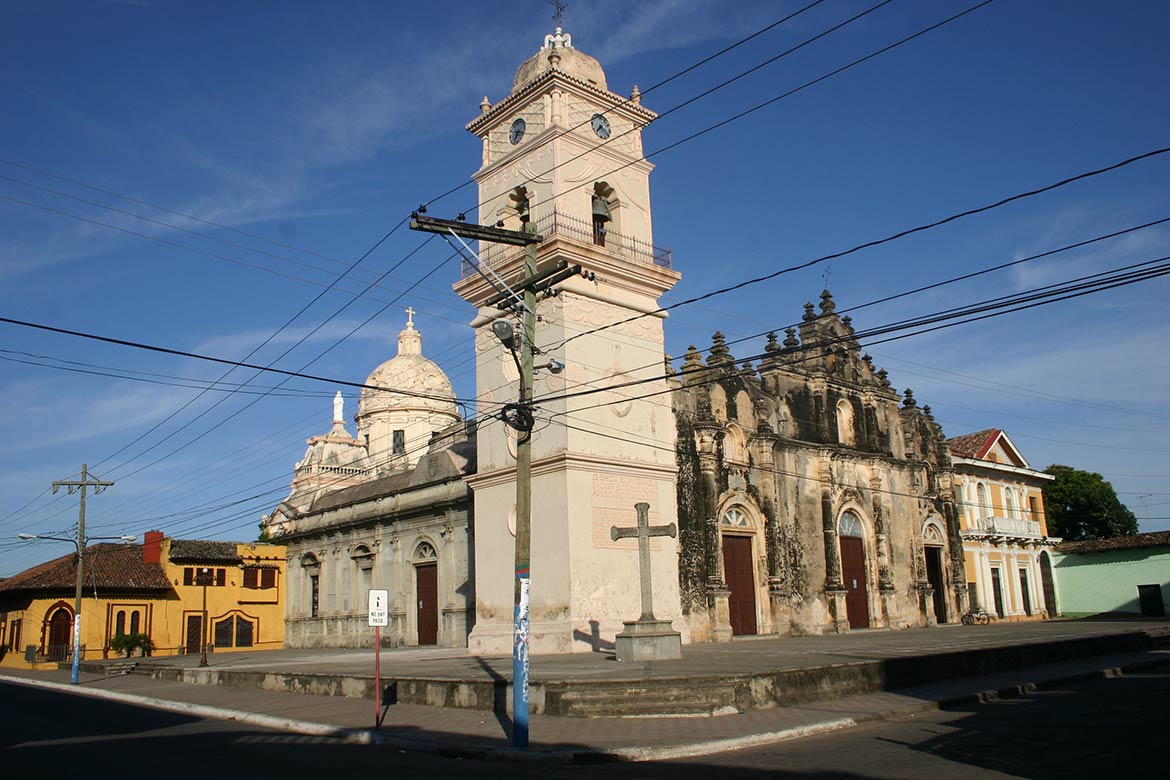 16th century church Iglesia la Merced in Granada, Nicaragua. Image: Alex Barth Arts & CultureErnesto Cardenal Ernesto Cardenal is a major poet of the Spanish language and a spokesman for justice and self-determination in Latin America. Rubén Darío The Nicaraguan poet who changed the course of Spanish poetry and brought it into the mainstream of twentieth-century. Museo Archivo Rubén Darío The Rubén Darío museum (in Spanish). Casa de los Tres Mundos The Casa de los Tres Mundos Foundation is a catalyst for cultural exchange between Central America and the rest of the world. |
Business & EconomyNicaragua is primarily an agricultural country with small industries. It is the least developed country in Central America. Coffee is one of the country's principal products. Other top exports of Nicaragua are insulated wire, knit ware, gold, and frozen bovine meat.Nicaraguan Association of Producers and Product Exporters - APENN Business organization founded in 1991 to represent and provide services to its partners, exporters, importers and providers of International Trade Services. Banco Central de Nicaragua The Central Bank of Nicaragua. Bolsa de Valores de Nicaragua Nicaragua's Stock Exchange. |
 Cathedral of León © INTUR |
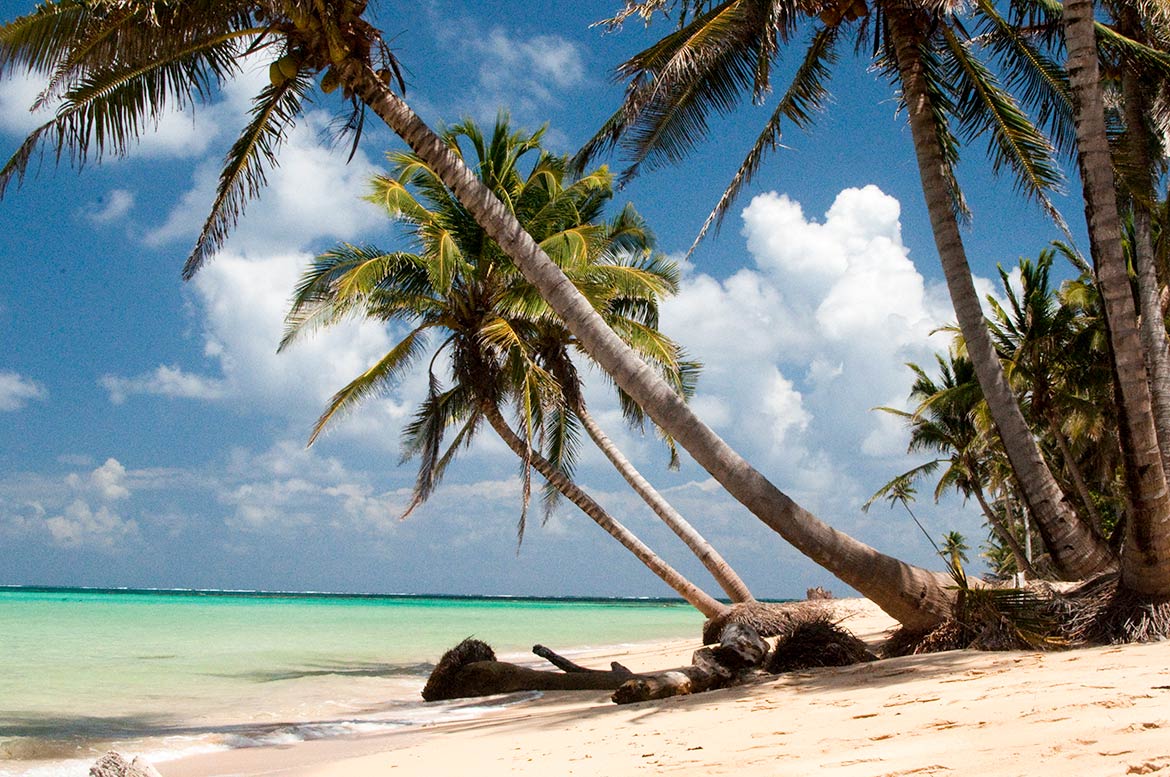 Otto Beach on Little Corn Island, Nicaragua. Image: Brian Johnson & Dane Kantner Travel and Tour Consumer Information
Destination Nicaragua - Travel and Tour GuidesDiscover Nicaragua Cities: Managua (capital city); Bluefields (Black Creole culture); Carazo (mountains and beaches), Chinandega, Granada, Jinotega, León, Masaya (gateway to Masaya Volcano National Park), Matagalpa (coffee and mountains), Puerto Cabezas (or Bilwi, a Caribbean port town); San Juan del Sur (bay with beaches). Lakes: Apoyo Lagoon (a volcanic lake and a natural reserve); Lake Managua (Lake Xolotlán, large lake contaminated by sewage from the capital); Lake Nicaragua (the largest lake in Central America has sawfish, tarpon, and sharks); Isla Zapatera (island with a shield volcano); Masaya Volcano (national park with a massive caldera); Corn Island (coconut islands with coral reefs in the Caribbean), Miskito Cays (archipelago with estuaries, coral reefs, cays and seagrass beds). The East: Raan (North Caribbean Coast Autonomous Region), Raas (South Caribbean Coast Autonomous Region). Find accommodation, hotels, attractions, festivals, events, tourist boards, biking, hiking, climbing, cruising, diving, tours and much more. Nicaragua, a country with a heart Country and tourist information by the Nicaraguan Institute of Tourism (INTUR). (in Spanish) Visit Nicaragua Nicaragua Tourism Board US. Nicaragua Online The gateway to the land of lakes and volcanos. Alcaldía de Managua Government of the city of Managua. (in Spanish) 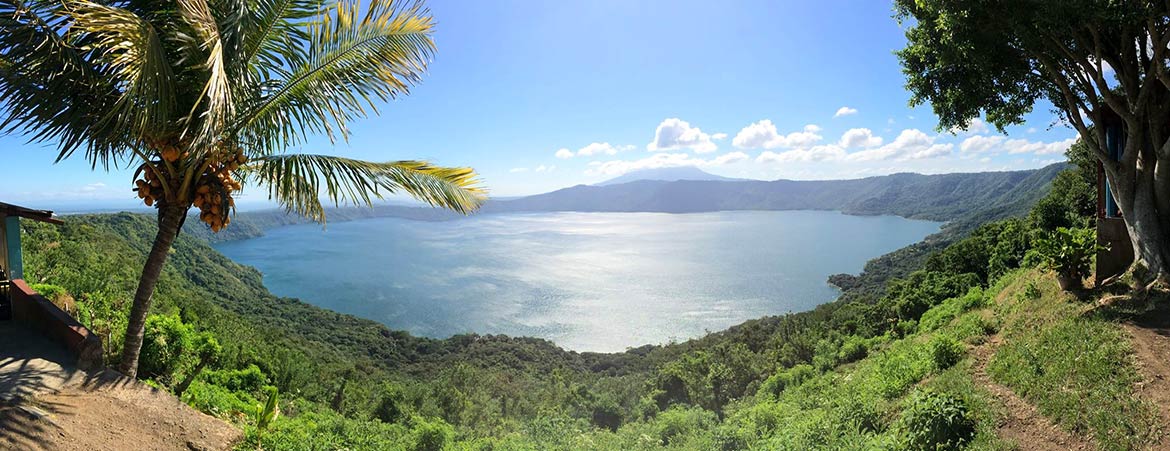 Laguna de Apoyo, a volcanic lake seen from the crater rim. Laguna de Apoyo is one of the 78 protected areas of Nicaragua. Image: Phayne |
EducationUniversidad Centroamericana de Managua Founded 1960 (in Spanish). Universidad Nacional Agraria Universidad Nacional Autónoma de Nicaragua The Independent National University of Nicaragua-Leon (UNAN-Leon) is the oldest of Nicaragua and the last university founded on Latin America by the Spaniards, City of Leon. Universidad Nacional Autónoma de Nicaragua Managua Founded 1982 (in Spanish). Universidad Nacional de Ingeniería |
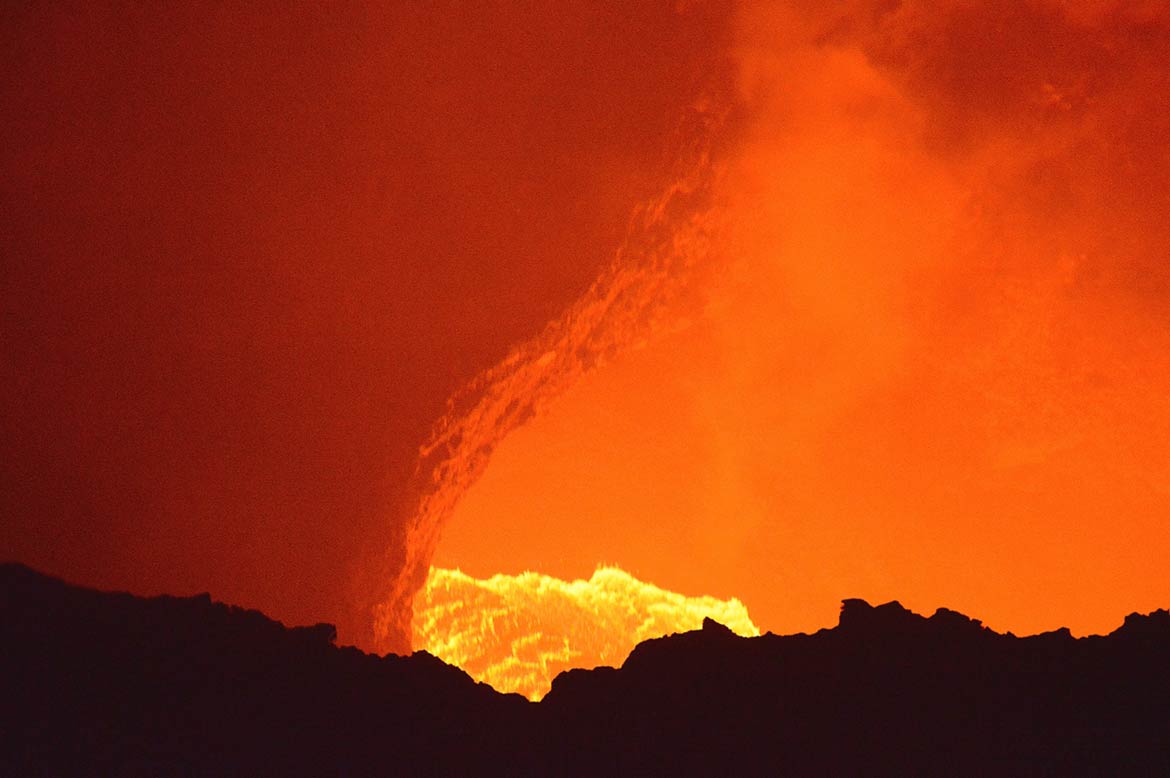 Masaya Volcano. Masaya is a caldera located about 20 km south of Nicaragua's capital Managua. Image: Alex Keshavjee Environment & NatureGovernment Agencies Ministerio del Ambiente y los Recursos Naturales de Nicaragua | MARENA Official website of the Ministry for Evirnoment and Natural Resouces (in Spanish) Sistema Nacional de Información Ambiental de Nicaragua - SINIA Nicaragua's National Environmental Information System (in Spanish) NGOs Nicaragua Network Environmental Committee The committee aspires to strengthen environmental protection in Nicaragua by working in solidarity with Nicaraguan non-governmental organizations (NGOs) Nature Conservancy Nature Conservancy is working with Nicaragua's leading environmental organizations to protect the country's rich natural heritage. |
HistoryThe country's meagre national wealth benefited mainly a few elite families of Spanish descent, in particular the Somoza family in the mid-20th century. This dynasty ruled the country with US backing between 1937 and the Sandinista revolution in 1979. Since the 1850's, the U.S. government has intervened in Nicaragua numerous times, creating puppet governments to protect its economic and political interests.Nicaragua History and Culture History and culture of Nicaragua. Historical Background of Nicaragua Brief overview of Nicaragua's History. History of Nicaragua The free encyclopedia Wikipedia about Nicaragua's history. Jóvenes Por Nicaragua Site about Nicaragua with sections on policy, economy, and history. Nicaragua's History Historical summary and a timeline of the important events in Nicaragua's history. Political History of Nicaragua Nicaragua, as a Nation-State (Stanford University). |
Native - Indigenous People of NicaraguaWho Owns the Forest? Article about conflicts between Nicaragua's indigenous tribes and Mestizo farmers. La Nación Moskitia en Internet Site with information about Miskito Nation (in Spanish) Nicaragua and the Indian Revolution Essay by Bernard Nietschmann on indigenous uprisings in Nicaragua during the 1980s. Miskitos and Sandinistas - Nicaragua's Unresolved Ethnic Problems About the conflict between Nicaragua's central government in Managua and the Miskito Indians on the Caribbean coast. Inside Nicaragua's bloody conflict over indigenous land As new settlers occupy indigenous lands in Nicaragua, the violence is forcing the native Miskitos to flee to Honduras. The history of Native Nicaragua Various articles about the history of Nicaragua's native indians. |
|
Other countries of Middle and Central America: Belize | Costa Rica | El Salvador | Guatemala | Honduras | Mexico | Panama Major Cities in Middle and Central America: Belmopan, Guatemala City, Managua, Mexico City, Panama City, San José, San Salvador, Tegucigalpa Countries of South America: Argentina | Bolivia | Brazil | Chile | Colombia | Ecuador | French Guiana Guyana | Paraguay | Peru | Uruguay | Suriname | Venezuela |
One World - Nations Online .:. let's care for this planet Promote that every nation assumes responsibility for our world. Nations Online Project is made to improve cross-cultural understanding and global awareness. More signal - less NOISE |
| Site Map
| Information Sources | Disclaimer | Copyright © 1998-2023 :: nationsonline.org |